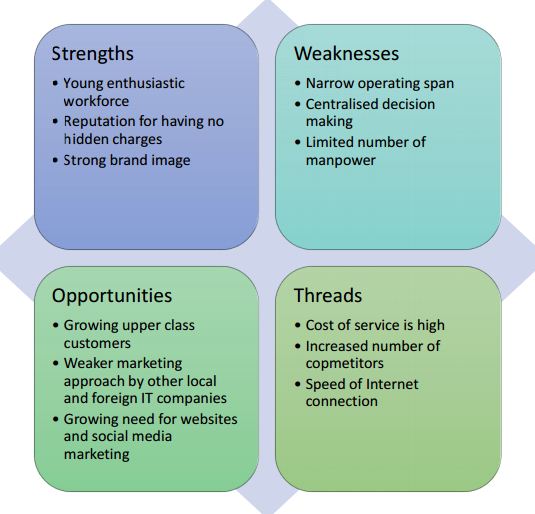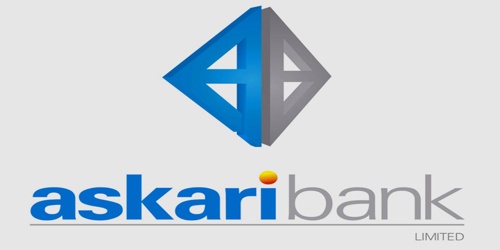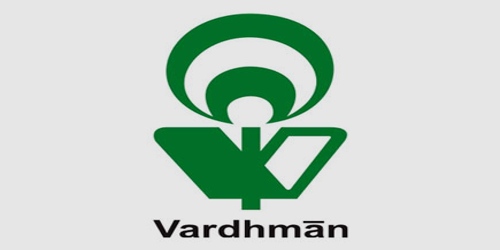Project Management System of Portonics Limited
Portonics is a team of technology consultants that specialize in web design, social media, online marketing, and branding on the web. Portonics provides the best IT services to its clients using some specific project management tools. Trello is one of them. It is very easy to use and both client and service provider has significant access to it. Both the parties can give their feedback on the project at any stage of the project. That’s why
Trello is one of the best project management tool in the world and used by best companies like Virgin Group, General Motors etc.
Portonics has very good reputation in the market as the best service provider and the clients are also very happy to have the service from Potonics. Thus it has significant bargaining power over buyers and the cost of its service is quite high. Also, it provides Social Media Marketing Solution to some of its clients which gives it the ultimate market lead. Moreover, the threat of other companies are less due to this reason and lack of quality service provider companies exist in the market gives Portonics the edge over to its competitors.
Introduction
PORTONICS is a team of technology consultants that specialize in web design, social media, online marketing, and branding on the web. Our goal is to help clients understand and make full use of digital technology that can heighten brand awareness and lead to better business.
Our clients include the British Council, Mermaid Eco Resort, Building Technology and Ideas, Bengal Foundation, Jatrik Travels, and the WildTeam (formerly Wildlife Trust of Bangladesh). Our communications partner is Big Blue.
a) Web Development
Our website graphics and functionality are made with the highest quality in mind. We pride ourselves on being accessible to our clients. As a small design/software house, we foster long-lasting partnerships with our clients. We have experience walking clients through the process of developing a business identity on the internet.
b) Application Development
When it comes to developing applications, nothing is more important than understanding our customers’ needs. Our proven development process efficiently translates those needs into a fully functioning system. Doing things right the first time always costs less.
c) User Interfaces
Portonics provides detailed graphical user interface design and information architecture. Some of our UI experience includes enterprise search application design and social media user interfaces.
Objectives of the project:
The main objective of the study is to find out how Portonics uses project management tool like TRELLO to serve its customers in Bangladesh. To achieve this main objective the following specific objective has been taken:
- To explore a theoretical aspect of project management tool.
- To know how Trello works.
- To high light some implication of the study.
- To gain an understanding about Trello users in Bangladesh.
Methodology
Data Collection:
Both the primary as well as the secondary form of information was used to prepare the report. The details of these sources are highlighted below:
(a)Primary Source
I have collected primary information by interviewing employees, managers, observing various organizational procedures, structures. Primary data were mostly derived from the discussion with the employees of the organization.
(b)Secondary Source
I have elaborated different types of secondary data in my research. Sources like internet data are mostly considered as secondary source.
Project management software
Project management software has the capacity to help plan, organize, and manage resource pools and develop resource estimates. Depending on the sophistication of the software, it can manage estimation and planning, scheduling, cost control and budget, management, resource allocation, collaboration software, communication, decisionmaking, quality management anddocumentation or administration systems. Today, numerous PC-based project management software packages exist, and they are finding their way into almost every type of business. In the early days, however, project management software ran on big mainframe computers and was used only in the large projects. These early systems were limited in their capabilities and, by today’s standards, were difficult to use.
Project management Software Solution ProvidersTypes
a) Desktop
Project management software has been implemented as a program that runs on the desktop of each user. Project management tools that are implemented as desktop software are typically single-user applications used by the project manager or another subject matter expert, such as a scheduler or risk manager.
b) Web-based
Project management software has been implemented as a web application to be accessed using a web browser. This may also include the ability to use a Smartphone or tablet to gain access to the application.
c) Personal
A personal project management application is one used at home, typically to manage lifestyle or home projects. There is considerable overlap with single user systems, although personal project management software typically involves simpler interfaces.
d) Single user
A single-user system is programmed with the assumption that only one person will ever need to edit the project plan at once. This may be used in small companies or ones where only a few people are involved in top-down project planning. Desktop applications generally fall into this category.
e) Collaborative
A collaborative system is designed to support multiple users modifying different sections of the plan at once; for example, updating the areas they personally are responsible for such that those estimates get integrated into the overall plan. Webbased tools, including extranets, generally fall into this category, but have the limitation that they can only be used when the user has live Internet access. To address this limitation, some software tools using client–server architecture provide a rich client that runs on users’ desktop computer and replicate project and task information to other project team members through a central server when users connect periodically to the network. Some tools allow team members to check out their schedules (and others’ as read only) to work on them while not on the network. When reconnecting to the database, all changes are synchronized with the other schedules.
f) Integrated
An integrated system combines project management or project planning, with many other aspects of company life. For example, projects can have bug tracking issues assigned to each project, the list of project customers becomes a customer relationship management module, and each person on the project plan has their own task lists, calendars, and messaging functionality associated with their projects.
Similarly, specialized tools like Source Forge integrate project management software with source control (CVS) software and bug-tracking software, so that each piece of information can be integrated into the same system.
g) Non-specialized tools
While specialized software is common, software that is not project management-specific is often used in the management of projects. In particular, office productivity tools are used by most project managers.
Trello
Trello is a free web-based project management application made by Fog Creek Software.
Trello uses a paradigm for managing projects known as kanban, a method that had originally been popularized by Toyota in the 1980s for supply chain management.
Projects are represented by boards, which contain lists (corresponding to task lists). Lists contain cards (corresponding to tasks). Cards are supposed to progress from one list to the next (via drag-and-drop), for instance mirroring the flow of a feature from idea to implementation. Users can be assigned to cards. Users and boards can be grouped into organizations.
Trello operates a freemium business model, as well as being cross-subsidized by other Fog Creek Software products. A basic service is provided free of charge though a Business Class paid-for service was recently launched in 2013.
a) Feature
Trello has limited support for tags, in the form of six colored labels that can be renamed. Cards accept comments, attachments, votes, due dates and checklists. Trello has an API.At the moment, the supported mobile app platforms are iPhone and Android.However, its website has been designed to be accessible in most mobile web browsers. An iPad application was released on March 12, 2013.
b) Release
Trello was released at a TechCrunch event by Fog Creek founder Joel Spolsky. Wired magazine named the application in September 2011 as one of “The 7 Coolest Startups You Haven’t Heard of Yet”. Lifehacker said it “makes project collaboration simple and kind of enjoyable”.
c) Growth
In July 2012, the site surpassed 500,000 users. By December 2012, it had surpassed 1,000,000.
d) Architecture
Trello is built on top of MongoDB, Node.js and Backbone.js.
e) Mobile Apps
There are a couple of native mobile apps for Trello on different platforms, including iPhone & iPad, Android and also an app for Windows 8 or Windows RT.
Trello: Project Management with Efficiency
Project management is almost as important as project development. A well-developed project would lose its importance if project management is faulty. Due to this reason, there are several highly efficient project management tools and software available in the market. Among the freely available tools, Trello is one of the finest project managers out there. Good thing about Trello is that it can organize simplest tasks as well as advanced projects. Whether it is your day-to-day work or some high-tech project, Trello can fulfill the management purpose equally effectively.
The user interface of Trello is extremely simple which makes it very easy to use. Trello gives the option of special cards which you can use to jot down special information or ideas and retrieve them any time in future. You can then organize these cards in lists and name those lists according to the nature of the cards. What’s more, you can even attach files to the cards. For example, if you scribble down an idea on a card and you require a file to be used in that idea, you can simply attach the required file with the card. This file can be a document, an image, a drawing etc. Your attachments, dates and checklists are arranged in a neat and simple interface.
So Trello provides a simple and easy-to-use organization of your project and all the aspects of the project are arranged so that you can investigate into any single aspect in no time. This arrangement saves time and allows you to work on your project in a streamlined manner.
Understanding Trello works
Trello works like below process.

You may have heard the buzz about the project management and collaboration product, Trello. Created by Fog creek Software, this hosted tool can assist anyone with getting and staying organized — whether you’re a solopreneur launching a new initiative or you’ve been running an established business with an array of remote employees. Trello can help you manage a single project, juggle multiple workflows, or, keep a handle on both personal and professional interests.
Trello’s success comes from its flexible design. It provides the basic elements and you can arrange and organize them to match the structure your project demands.
a) Unload Your Brain
“Basically, you can use Trello to unload your brain, then move things around in a way that works for you,” says Ben McCormack of Fog Creek Software. While a flexible approach to organization is great, there’s another thing that makes Trello even better:
“It’s free,” says McCormack.
Despite the overwhelming popularity of the product, McCormack says the product was intended to be free, and will remain that way:
Our plan was to put it out there, hope that people would love it, invite others to use it, and it would market itself. We do have some additional pay features, such as Trello Gold and Business Class, but we’re not pushing those on our users.
This tutorial will help you become familiar with Trello’s basic terminology, and then walk you through the steps to organizing a project. Get set up with Trello for free to follow along. Once you are familiar with Trello, you can take advantage of its flexibility to work out a method that suits your business.
b) Understanding Trello’s Terminology
Trello is based on three main elements: boards, lists, and cards:
- A board is often used to house a project. Think of a late night TV crime drama; at the start of a new case, detectives notoriously gather around a large white board. It collects everything involved in solving the case: leads, suspects, and things to investigate. Items are crossed off, added, or moved around. The board is constantly updated as the case progresses.
- Within boards are lists. These typically represent the different stages of progression toward project completion. Think again of the crime drama: at the start of a case are several tips to explore, which may quickly turn into dead ends or become solid leads. This could be represented by three lists on the board: tips, dead ends, and valid leads.
- Cards are the equivalent of to-do items which populate your list. What good is a list without any items on it? Each card can represent a specific action, which can be moved among different lists as it progresses or changes hands. Cards can contain a wealth of information, such as photos, conversations, documents, or links. They also can be broken down further using checklists.
While your job probably differs from a late night crime drama, the basic elements are the same. The board represents your overall goal. Cards are your to-do items, which can be moved among lists, depending on their progress in the project.
But because of Trello’s flexible design, there’s nothing forcing you to comply with this setup. “You can set it up to work for you, ” says McCormack. “One client used a list for each customer. Within that, they used cards to represent areas of work for that customer, and broke the cards down further by using checklists.”
Let’s take a look at a basic Trello setup.
Getting Started with Trello: A Basic Setup
Step 1
Your first step in using Trello is to create a board. Click on the Boards menu item in the right corner of Trello, then choose New Board. We’ll call this board Software Release. A board starts off with three default lists: To do, Doing, and Done.
Step 2
You can work within these three lists, edit their titles, or add more lists to them. For example, if you are planning a software release, you might start off with a list of features to be assigned among your staff. Let’s edit the title of the first list from To Do to Features. Click on the list, edit the name, then click Save.
Step 3
You know that later in the project, you’ll need a list for software that is ready for testing. Double-click on the blank space below the lists, and a box appears. Type the name of a new list, Testing, and place it in fourth position on your display.
Step 4
Now your Software Release board has four lists:
Step 5
You can move lists around to arrange them in an order that’s logical to you. Perhaps you decided you want Done to be the final list, so click on that and drag it to the last position.
Step 6
Now that your lists are set up, you can enter some cards. First you want to itemize the features you’re planning to work on in the release. Each will have its own card, which will start off in the features list. Click on the Add Card button under Features, then enter the description of the feature: Update the user interface.
Step 7
Continue adding cards for each planned feature. Right now you’re just creating the cards, without adding any content; we’ll look at cards in more detail later.
Step 8
You can move cards between lists by clicking on the card and dragging. Let’s move Fix known bugs from Features to Doing.
Adding Others to Your Board
A Trello board can be either public or private. This setting is displayed at the top of a board, to the right of the board’s name.
If you’re a business of one, your board can stay private; you don’t need to invite other members. Private boards are also a great way to organize your non-business affairs, such as planning a party or keeping up with household repairs.
But if you have others working with you, you’ll need to set your board to public so you can add the people who are working on the project with you. Choose Add Members from the sidebar menu. If the person isn’t already on Trello, enter an email address to invite them to your board.
Once the member accepts the invitation, you can begin interacting with them; you can assign cards to them, they can receive notifications of changes to their cards, and they can engage in discussions.
Filling out Cards
Cards are an invaluable way to keep everything relevant to a task in one place. Rather than having details scattered among various emails, documents, images, or conversations, you can pull everything together on the card, where it will remain even after you archive the project.
Let’s take a closer look at what you can do with cards.
Step 1
When you double-click on a card, a more detailed card screen displays. Here is the expanded card for the Update the user interface item created earlier.
Step 2
You may find it helpful to categorize your cards. The Labels and Members areas on the upper right corner allow you do this. You can click on Edit Labels to color code a card — perhaps to specify department, priority, and client. Or, you can use Assign to link a card to a Trello member.
Step 3
On the left, you’ll see the Activity column, where users can engage in conversations, or to enter notes to themselves. If you’re entering a comment to another user, identify the person by typing the @ sign with their Trello name, or by clicking on the down arrow symbol just below the comments area. Trello will send that person a notification of the message.
On this card, you type a comment for the user @seanhodge1: “You’ll be taking over the user interface for the new release”.
Step 4
On the middle right column are the Actions, where you can enter more details about the card. The first action enables you to break down the card into more detailed checklists. Click on the Add Checklist button, then enter a name to describe your checklist. Here, we’ll call the task Read results of user survey.
Now you can type specific checklist items for that task. They will appear as a list with a checkbox beside them. You can even copy items from another list, if you had several tasks that are composed of similar items.
Here is an example of the completed checklist created for the task Read results of user survey.
Step 5
Due dates are an important part of any project, so you can click on the Due Date button in the middle of the Actions column to add a date to this card.
Step 6
You can attach images, documents, or other files to a card, which makes it easy to share information, particularly if your workers are remote. Click on Attachments and you can add files from your computer, Google Drive, or your Dropbox.
Step 7
In addition to clicking on the card and dragging it, as we did earlier, you can use the Move Card button to move the card as it changes hands or progresses in the project’s cycle.
Step 8
The bottom two buttons allow you to Subscribe to a card, which will keep you informed on the card’s progress, or Archive a card once it’s completed.
Branding Process of Portonics Ltd.
The 5 factors of Branding
Understanding these following factors are essential to understand the current position of a Brand and how it differentiates itself from its competitors to create a permanent position in the minds of the consumers.
- Brand Attributes
- Consumer Perception
- Consumer Expectation
- Price
- Competitor Attributes
Factors of Branding
Brand Attributes
This is basically what the brand delivers through features and benefits to consumers. For Portonics Ltd., the services they provide in Bangladesh (described in Chapter 2) are their brand attributes that make them different from their competitors. If we consider it in materialistic point of view, then the size, shape, color, etc are part of the attributes. However as PORTONICS is a part of the service industry, in this case, the superior services they provide and the different number of services they provide in Bangladesh act as the attributes for PORTONICS.
Consumer Expectations
As the name says it, it is what that any IT demanded company expect to receive from the brand. Being an internee at PORTONICS, my expectation would be to find PORTONICS anywhere I travel around the country. At this level, PORTONICS is successful in meeting consumer’s expectations.
Competitor attributes
When we consider brand positioning, we have to analyze who are our competitors and what are they providing in terms of attributes to their consumers. Thus, competitor attributes are basically what the other brands in the market offer through features and benefits to consumers. In the later part of this chapter, this part is described in details.
Price
Pricing strategies are very important when it comes to distinction among brands and decision making process. However, as IT companies provide services, for PORTONICS the pricing strategy is mainly based on the amount of cost that that have occurred during the project which is always consist of their fixed and variable cost. When it comes to immediate competitors of PORTONICS in Bangladesh, variation among the other IT companies are not that high.
However, when we compare it with the local IT companies, there occurs a vast amount of variation mainly because the ultimate survival plan for them is through their cost.
Consumer perceptions
This is the perceived quality and value of the brand in consumer’s mind (i.e., does the brand offer the cheap solution, the good value for the money solution, the high-end, high-price tag solution, etc.?). If we consider PORTONICS’s perception in the customer’s mind, then the first thing customer’s would consider is the brand that PORTONICS has created within the country.
As a result, most of the companies want to do their website or social media marketing through PORTONICS LTD. This means a lot to PORTONICS as they always gives value to their customers and in service marketing customer perception gives you the ultimate business.
SWOT Analysis
The description below analyses Portonics Ltd.’s internal strengths, weaknesses, external opportunities and threats. This has been prepared based on their performance since their existence in our country and some IT comapnies are taken into consideration as immediate competitors.

Industry Analysis (Porters Five Forces)
It is extremely crucial to analyze competitive forces in the industry environment to identify opportunities and threats. Michael E. Porter’s well-known framework, known as the five forces model helps with this sort of analysis. The model focuses on five forces that shape competition within an industry. The stronger the five forces, the more limited is the ability of established companies to raise prices and earn greater profits. Therefore, we can conclude that a strong competitive force can be considered as a threat because it depresses profit, whereas, a weak competitive force can be viewed as an opportunity as it facilitates the companies to earn higher profits. The situation of the industry changes over time. The influence of the five forces in the banking industry has been discussed below:
Threat of Potential Entrants:
Potential competitors are companies that are not currently competing in an industry but have the capability to get into the industry. The IT Industry of Bangladesh seriously faces the threat of new entrants. However the threat comes from two directions. The first threat comes with the arrival of the local companies like Sailor Info Tech. or Devs Team. Secondly, the continuous entries of foreign companies like Orange, GP IT etc. also possess a severe threat to this industry.
But PORTONICS is aware of these potential competitors. So it is trying to expandcountrywide to make the sector unattractive and to create entry barrier. Government policies for IT industry are not so strong in this country. We do not have strong rules and regulation from Bangladesh Government for regulating the private ITsectors. If government does not regulate the IT sector strongly, then lots of new IT companies will come and will make the competition more intense.
Rivalry among Established Companies:
Although in the U.S., IT companies offer a wide range of activities, including website management, Credit management, Automation, Client management, portfolio management, etc, but, in case of our country, these services may differ. In Bangladesh, anIT firm can perform multiple operations including website creation and management, portfolio management, etc.
This scenario is true for all the IT companies operating in Bangladesh. The prime competitors of this sector are-
- PortonicsLtd.
- ORANGEBD
- GP IT
- Sailor Info Tech. Ltd.
- Devs Team Ltd.
- Threat of Substitute
In IT sector, the types of services provided are similar to each other. That’s why everything depends on the service provided. The best the service is, the more reputation the company has.
Thus, threat of substitute is less in this sector. Moreover, Portonics provides Social Media Solutions to companies which is a unique feature. This makes the business of Portonics more sustainable in the market and reduces the level of substitutes.
Bargaining Power of Buyers:
Bargaining power of the buyer can be viewed as a competitive threat when they are in a position to demand lower prices from the company or when they are in a position to demand better service that can increase operating costs. On the other hand, when buyers are weak, a company can raise its prices and earn greater profits. For IT industry, buyer means the organization who want to take the service from a company. Here, service is the most prominent feature and mostly demanded. Price sometimes does not matter most if the service is best provided. Portonics has the reputation of providing the best service to its customer and thus has the supreme bargaining power over its Buyers.
Bargaining Power of Suppliers:
Bargaining power of suppliers can be viewed as a threat when they are able to force up the price that a company must pay for its inputs or reduce the quality of the inputs they supply, thereby depressing the company’s profitability. On the other hand, if suppliers are weak, this gives the company the opportunity to force down prices and demand higher input quality. For IT companies, the main supplier of organization are marketing persons.They goes to various organizations and describe our services.Portonics has the reputation of providing the best service to its customer and thus has the supreme bargaining power over its Buyers.
Result and Discussion
While working I have gained a newer kind of experience. After collecting and analyzing data I have got some idea about the overall project management process of Portonics Ltd. which is given below:
- Trello gives Portonics and their customer to interact among themselves. It helps Portonics to serve its customer better.
- Trello give us the opportunity to drag and drop attachments
- In Portonics, the employees think that it is the best collaborative use tools for project management.
- In Portonics Ltd most of the employees think that they always work for the betterment of the customer. It means they serve their customer first.
- PORTONICS currently don’t have any challenge as there is no other competitor exists. But in the near future it can be said they might face challenge.
- Portonics gives their number one priority in IT development rather than social media marketing.
Recommendation
Based on the observation, I can suggest some below recommendations-
- Portonics maintains their filling system well virtually but their physical filling system is very bad. Infact they do not have any such facility. I maintained my own files by myself back there.
- Portonics does not concentrate too much on their Social Media Department. But I believe that they should focus on this business as the prospect of this business is very high.
- In IT sector, you need to have various trainings to keep yourself updated. In Portonics, this type of trainings are less frequent in number. It should be done on periodic basis like weekly or monthly basis.
- Graphic Designing plays a very crucial role in IT Industry. In Portonics, the number of Graphic Designer is only one. So, it creates problem sometime to deliver on schedule project handover as designing part takes too much time.
- In Portonics, our Communication Expert is part time. So, Portonics can hire full time expert and train some marketing people the essential parts of communication to get the job done properly.
- In Portonics, there is no such department called ‘Market Research Department’. All the researches are done mostly by the Directors and partially it was me who was doing the researches. There should be separate department for this as you need to have proper market knowledge.
- There is no HR available in Portonics. So it becomes difficult sometimes to select good people for the organization. Also, due to having no HR, employee retention becomes difficult at sometimes.
Conclusion
Portonics is overall a very good organization to start a career as it gives one huge scope of work. Also their pay scale is good. Moreover, their reputation in market is significantly high and their clients are relatively very happy by the service they get from Potonics. This makes the organization more sustainable in market and gives it the opportunity to retain the market lead. Also, the higher authorities are very friendly and they have the mentally to hear from the employees all the time. This means their door is always open for any level of people working in the organization. Due to this behavior, the employee turnover rate is very less in the organization. I am very happy to have an organization like Portonics as my Internship. I wish Portonics the best for their future.
















